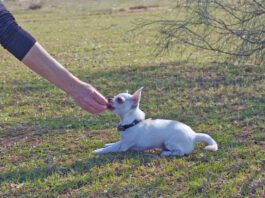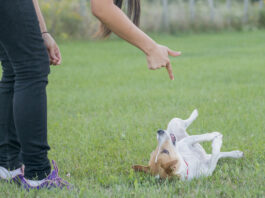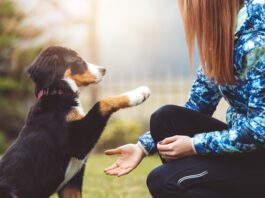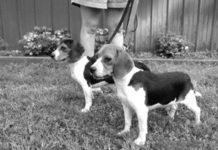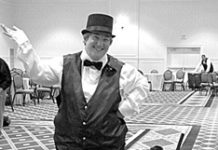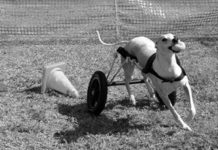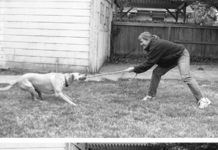Your Dog’s Ability to Track Scents
Humans have taken advantage of dogs' incredibly keen sense of smell over the ages for such uses as hunting, tracking lost and fugitive humans, and more recently, the detection of bombs, narcotics, and other contraband. It's well known that a dog's nose is many times sharper than our own estimates range from 10,000 to 100,000 times superior to ours, with a far greater number and variety of scent receptors in their noses, more neurons linking the nose to the brain, and a greater proportion of their brains devoted to smell.
Dog Training Using Rewards
What could be more convenient? Many trainers are recommending Skippy’s “Squeez’ It” as a convenient training tool because it can be used to dispense a peanut butter treat right into the mouth of a dog who deserves a reward. The dog loves it, and his handler’s hands stay clean and dry. No wonder this product is getting rave reviews from trainers.
Remedial House Training for Dogs
Meet Mollie
Canine Musical Freestyle
bonding
Letters: 11/04
A friend copied the article, “Monkey See, Monkey Do?” from the July issue for me, knowing I would want to subscribe, which I did.
A Paralyzed Dog is Still Flying High
and took four-month-old Gideon home in August 2002.
Seeking an outlet for Gideon's energy
How to Play Tug-of-War With Your Dog
Some trainers say you shouldn’t play tug with your dog. Not me! Those of you who enjoy this energy-eating aerobic activity with your dog will be pleased to know that I personally think it’s a fine game to play, as long as you’re using appropriate tug toys and playing with rules.
Young Dogs Learn From Older Well-Behaved Dogs
which includes social facilitation, mimicking, and trial-and-error learning.üFollowing the dog who responds properly to the Come!" cue helps the newcomer learn it
Advanced Dog Training Methods: How to “Fade” Prompts and Lures
looking right at them
Why Punishment-Based Dog Training Doesn’t Work
By definition, punishment is something that will decrease the probability of the occurrence of a certain behavior. Generally, this punishment involves something that is sufficiently startling or aversive so as to thwart the “problem” behavior. If the dog has benefitted from the behavior in the past, it will take even more startling or aversive punishment to override his expectation of getting that reward again. Frequently, a punished dog stops attending to you; you become something to be avoided.
Blind Dogs Can Have Normal Lives Too!
Chewbacca is, in most ways, a normal, happy, seven-year-old Golden Retriever. He loves to play with the other dogs. Like most Goldens, he enjoys a good game of fetch. He joyfully embarks on daily off leash romps with his guardian, Jenny Alt, and her three other dogs. Chewbacca has one trait that makes him just a little different, however. He cannot see. With a few accommodations in training and management, blind dogs can enjoy happy, normal lives.
Advanced Positive Dog Training Terms and Techniques
such as going through a series of "weave poles."üPremack exercise: To get the prize



